Inverter Buying Guide in India- How to Select The Best Inverter?
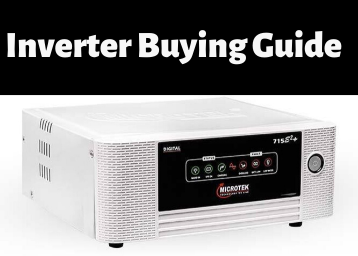
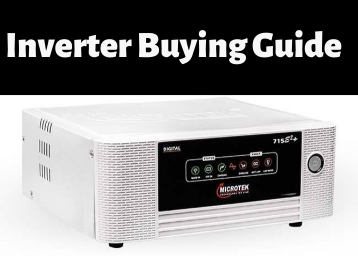
Introduction
Are you thinking of buying a new inverter for your home or want to upgrade your old one?
Do not worry! We will mention everything about inverters ranging from their types, essential features you should consider, top inverter models, and many more other things. Many of us face irregular power cuts and constant voltage drop in today's time. It is common to have inverters in each house nowadays as it keeps your AC or fan or refrigerator running even in the absence of power. Here is a Comprehensive inverter buying guide in India, you can refer to get knowledge about every single detail of inverters.
Also, check out the best battery for your inverter. For best inverter batteries in India click here
What is an Inverter?
A power inverter, or Inverter, is a power electronic device that changes direct current (DC) to alternating current (AC). The input and output voltage, frequency and power handling of inverters depending on the design of the specific model. To buy the best inverter, you don't need to understand its working but you should know basic functions, features, and limitations.
In this inverter buying guide, we have covered every aspect that would be helpful in your purchase. Gor through the complete buying guide to decide which inverter is best suited for your requirement. There are endless choices in the market for your requirement. Choose the best inverter for home in India carefully after considering all the factors.
What is a Solar inverter?
A solar inverter converts the DC output of a PV (photovoltaic) solar panel into AC in order to provide an electric backup.
To use the solar inverter, you will have to add the solar converter or solar charge controller to the inverter. Solar inverter is not suitable for home usage and even if you wish to do so, check if the current model of the inverter that you own supports it or not.
Types of Inverter

There are many different types of inverters you can find in the market. To purchase the best one for your home or office, you need to make sure what are the popular brands in the market and also your budget. Check out the Best Inverter/UPS for home in India in 2020 before you plan to purchase one.
Inverter Types Based On The Technology
While buying an inverter, the decision you need to make is what type of inverter is best for you according to your requirement-modified sine wave, pure sine wave or square wave inverter. There are three types of inverters you can find based on the technology.
1. Modified sine wave inverter
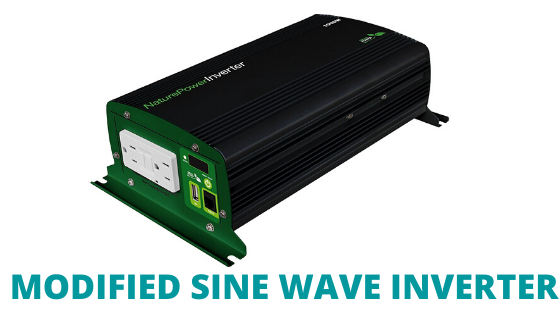
It uses the technology of transistorized circuits for monitoring appliances. It may not be ideal for extended use or to run sophisticated machines, but can be used temporarily.
Modified sine wave inverters are very affordable, all-purpose inverters. Using a more basic form of technology, they produce power which is adequate for powering simple electronics. You can use modified sine wave inverters to provide power for your less sensitive appliances like phone chargers, heaters and air conditioners.
- Cost-Effective
- Perfect for types of equipment that runs on Non-Sinusoidal Current
- A high level of Total Harmonic Distortion can create problems in the operation of particular electronics, such as televisions, computers, speakers, and fluorescent lighting ballasts.
- May Cause Some Equipment to Wear Prematurely
Top Modified Sine Wave Inverter in India
Product name | Price | Features | Ratings |
| ₹3,840 |
| 4.3 | |
| ₹3,375 |
| 4.1 | |
| ₹3,349 |
| 4.1 | |
| ₹4,384 |
| 4.4 |
2. Pure sine wave inverter
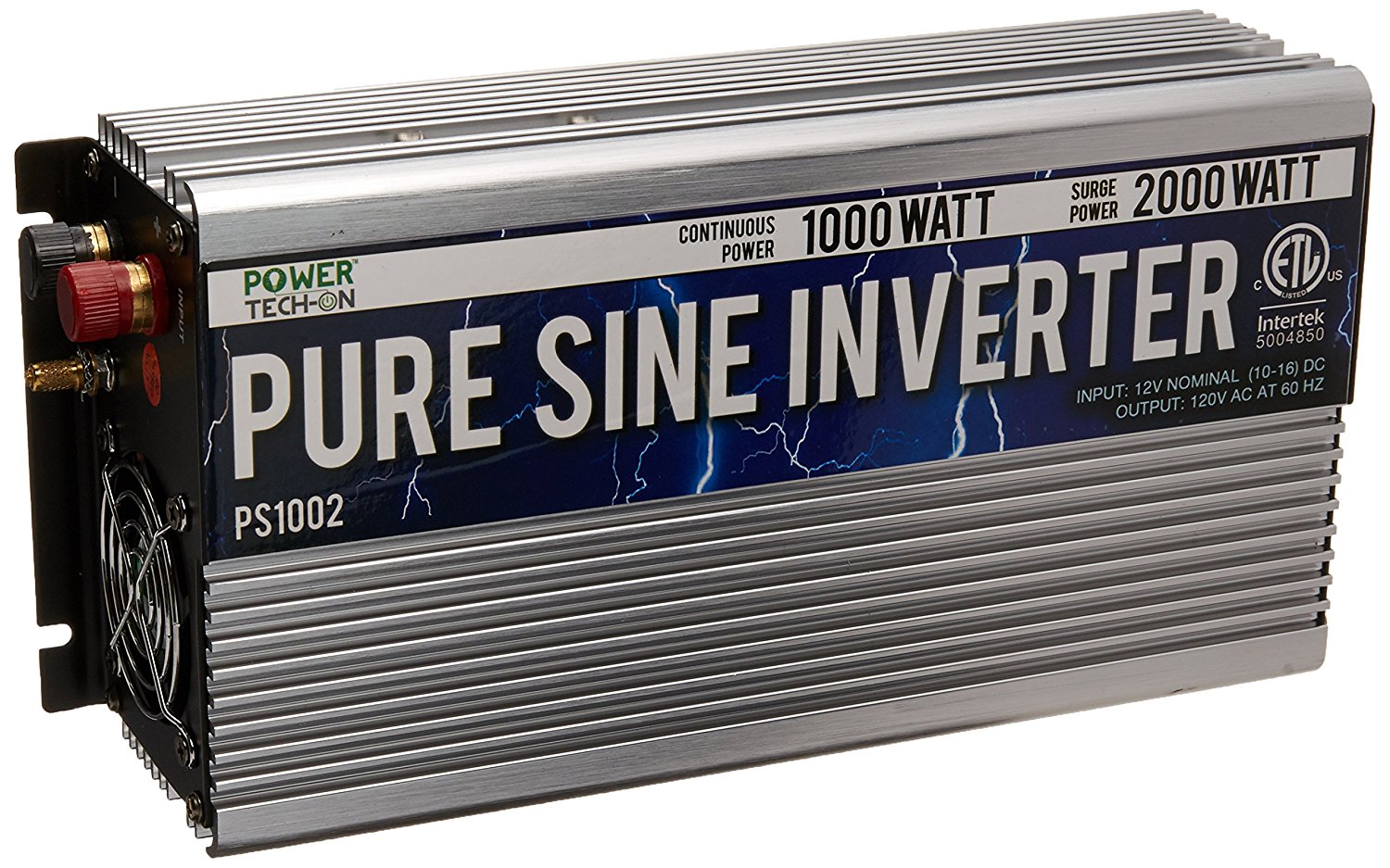
Pure sine wave inverters use the technology of digital signal processing to control applications. The price of these inverters is high but has a vast market division due to its long life and the ability to run any electronic device.
Pure sine wave inverters use sophisticated technology to protect delicate electronics. These inverters produce power which equals or is better than the power in your home. Appliances which do not function properly or work without smooth power will be safe with pure sine inverters. They are useful for televisions, laptops, digital microwaves, fridges and other electronic equipment. These inverters can power just about any AC appliance without risk of damage.
- Safest choice
- Longer lifetime
- Work more quietly
- Perfect for household appliances
- Ideal for catering to heavy loads
- These inverters are more expensive than the modified sine wave inverters.
Top Pure Sine Wave Inverter in India
Product name | Price | Features | Ratings |
| ₹5,798 |
| 4.4 | |
| ₹4,415 |
| 4.5 | |
| ₹7,230 |
| 4.3 | |
| ₹16,800 |
| 4.7 | |
| ₹4,899 |
| 4.3 |
3. Square Wave inverter
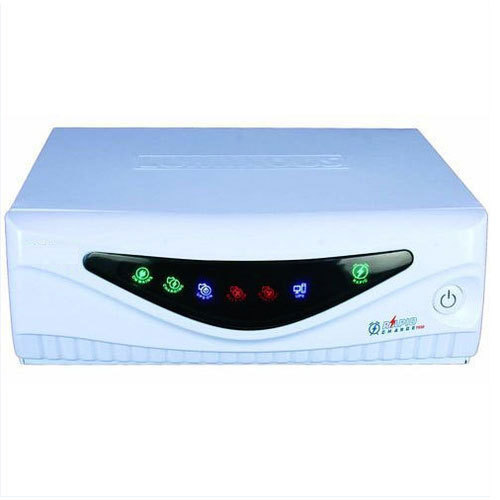
The square wave inverter is an inverter which converts solar DC to AC power. The square wave inverter is more simple in design and efficient than a sine wave inverter. However, the square wave is not appropriate for some loads because the large harmonic content can cause interference.
There are few, cheapest inverters which are square wave inverters. A square wave Inverter will run simple things like tools with universal motors without a problem. Square wave inverters are not so standard anymore.
- Economical
- Higher noise level
- Least efficiency
- Many devices get heated up if you use a Square wave inverter and make humming noise too.
Top Square Wave Inverter in India
Product name | Price | Features | Ratings |
| ₹6,390 |
| 4.7 | |
| ₹3,939 |
| 4.5 | |
| ₹3,599 |
| 4.6 | |
| ₹4,500 |
| 4.2 | |
| ₹2,999 |
| 4.1 |
Comparison between Modified Sine Wave Inverter, Pure Sine Wave Inverter, and Square Wave inverter
| Features | Modified sine wave inverter | Pure sine wave inverter | Square Wave inverter |
| Price | Less | More | Economical |
| What type of appliances is it ideal for. | Low-end | All | Low-end |
| Efficiency | Low | High | Low |
| Battery life | Less | More | More |
| Heat generation | Less | More | More |
| Suitable for high-end appliances | No | Yes | No |
| Effect to the health of small appliances | Yes | No | Yes |
| Suggest for prolonged use | No | Yes | No |
Features of An Inverter
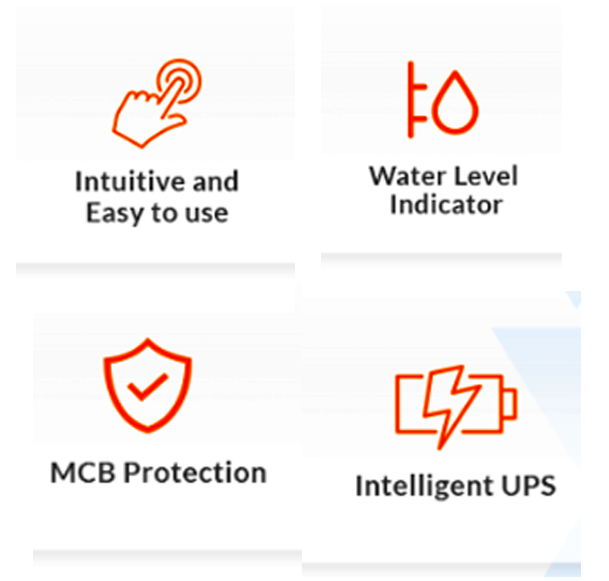
1. Ground fault protection- It is a feature where the Inverter gets turn off on its own when it detects a damp or wet surface, thus controlling threats like sudden fire or electric shocks.
2. Transfer switch- Nowadays inverters have an in-built switch for seamless swapping between Inverter and utility power. This feature enables the transfers of the power supply from the Inverter to utility power to the required appliances.
3. Solar power support- An inverter converts DC power generators by solar panels that are ideal for domestic and commercial use. These inverters are expensive due to the extra equipment they require like the electrical work needed while aligning the household's entire electrical set-up.
4. Low voltage alarm- A low voltage alarm is a most needed feature as it alerts when the voltage of the battery of Inverter is low. It prevents the voltage from harming the battery.
5. Remote control- The remote control is essential for people who cannot frequently move to check on the Inverter.
6. Power save sleep mode- Power save sleep mode helps save battery power by driving the Inverter into sleep mode when it is not in use.
Uses of Inverters
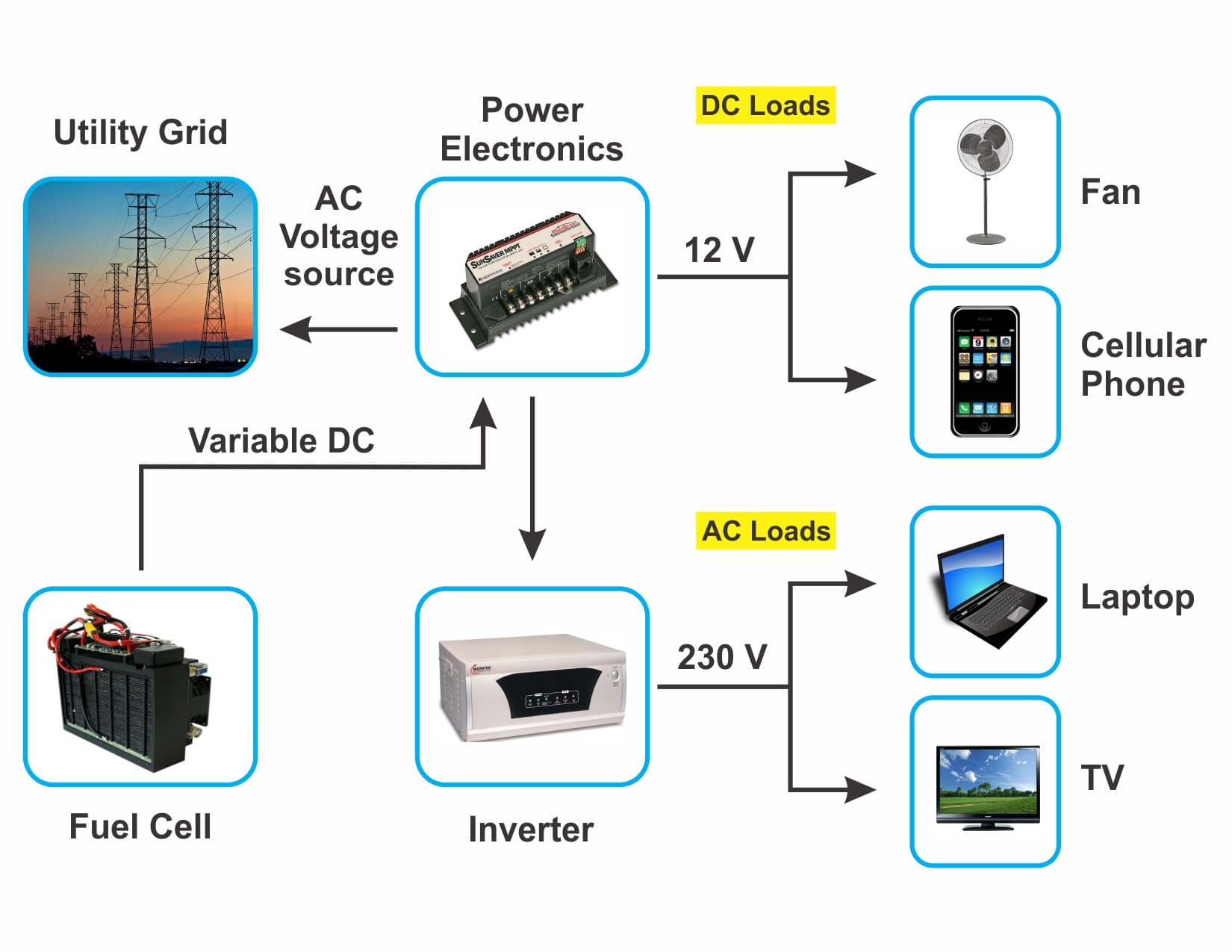
Compact/Lightweight Inverters gets used in cars, SUVs and minivans. Heavy-Duty Inverters gets used in trucks, boats & RVs. Inverter/Chargers gets used in homes & remote work sites. Medical-Grade Inverter/Chargers gets used in healthcare environments and ambulances.
Typical applications of an inverter may be when you are off-grid with solar panels and storage battery when you want to operate mains appliances like TV, desktop computer and refrigerator. They are also useful for backup power for critical loads when mains power fails.
How to Calculate Inverter capacity?
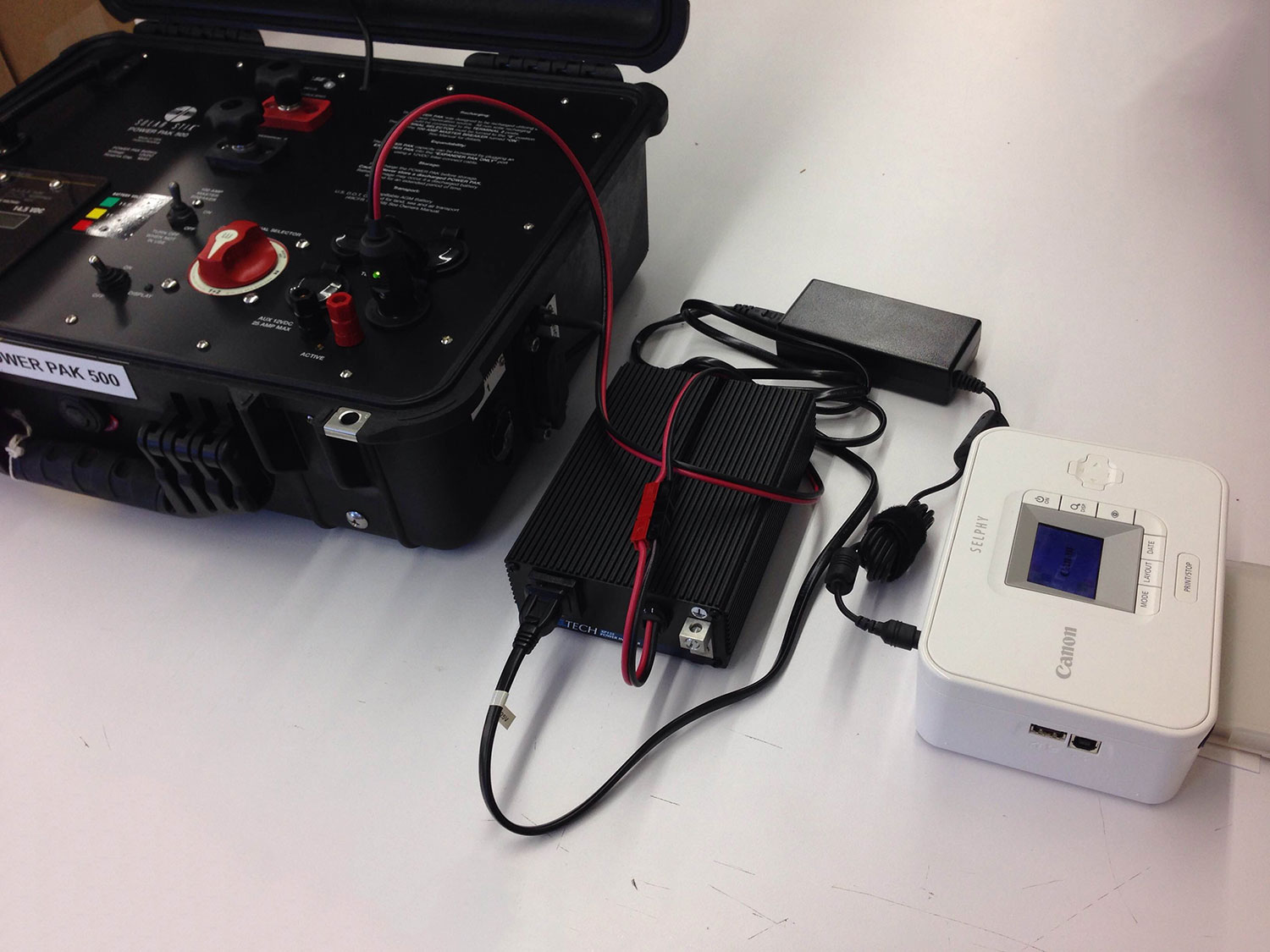
Inverter capacity is proportional to the load that you want to support. There is efficiency loss when there is a conversion of energy denoted by its power factor of an inverter. The inverter capacity is measured in Volt Ampere, abbreviated as VA.
What capacity Inverter you require for your home depends on the wattage of appliances that you need to run during a power shutdown.
A load of an inverter is calculated by (voltage ampere), which is equal to Watts (the power units of home appliances). You need to calculate the total load required and find an inverter that will provide power at least 50 per cent more than that.
The formula that will help you buy an inverter is this: (Power in Watts)= (Voltage in Volts)* (Current in Amperes). You need to select an inverter that matches up with the voltage of the battery that is supplying power to it.
So, if you want to buy an inverter to run your household appliances that require 500 watts of power for 3 hours, you can calculate in the following manner. As V* A= P, Consider the power factor as 0.8, x= 500/0.8= 625 VA.
The Inverter you need should be of 625 VA. You can go for a 700VA inverter that can easily supply the power you need for your appliances.
Types of Inverter Batteries
An inverter runs on a battery. So buying the right battery is essential. A wrong battery or an improper setting of a battery can cause less efficiency of the Inverter.
There are three categories of batteries. These batteries depend on the internal technology used to store the current. The three types of batteries available are as follows.
1. Automotive batteries
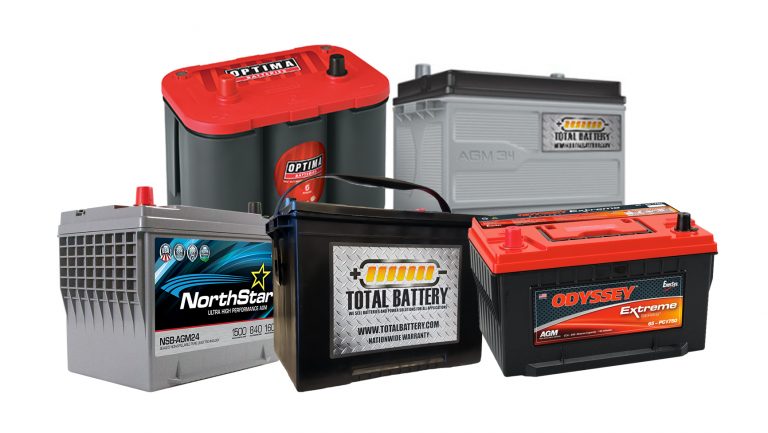
They are known as "High cycle" batteries. These batteries consist of lead-acid and produce high levels of power for a short duration. The discharge capacity is less, and these batteries cannot discharge more than 25%. They cannot stand frequent charging and discharge of power. These need constant maintenance with the pouring of distilled water regularly.
2. Maintenance-free batteries
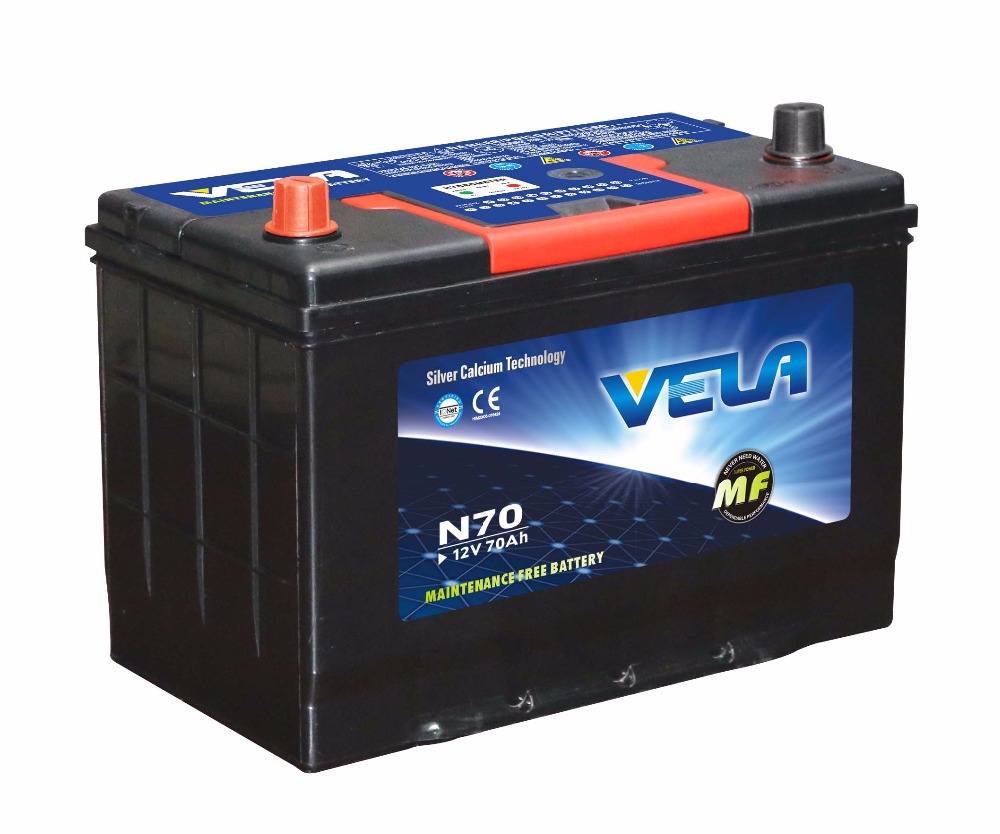
While the regular lead-acid batteries require constant checking up on the electrolyte for maintenance, maintenance-free batteries have lead-acid that do not need regular checking or ventilation. They are ideal in homes where no one has the time to monitor the batteries.
3. Tubular batteries
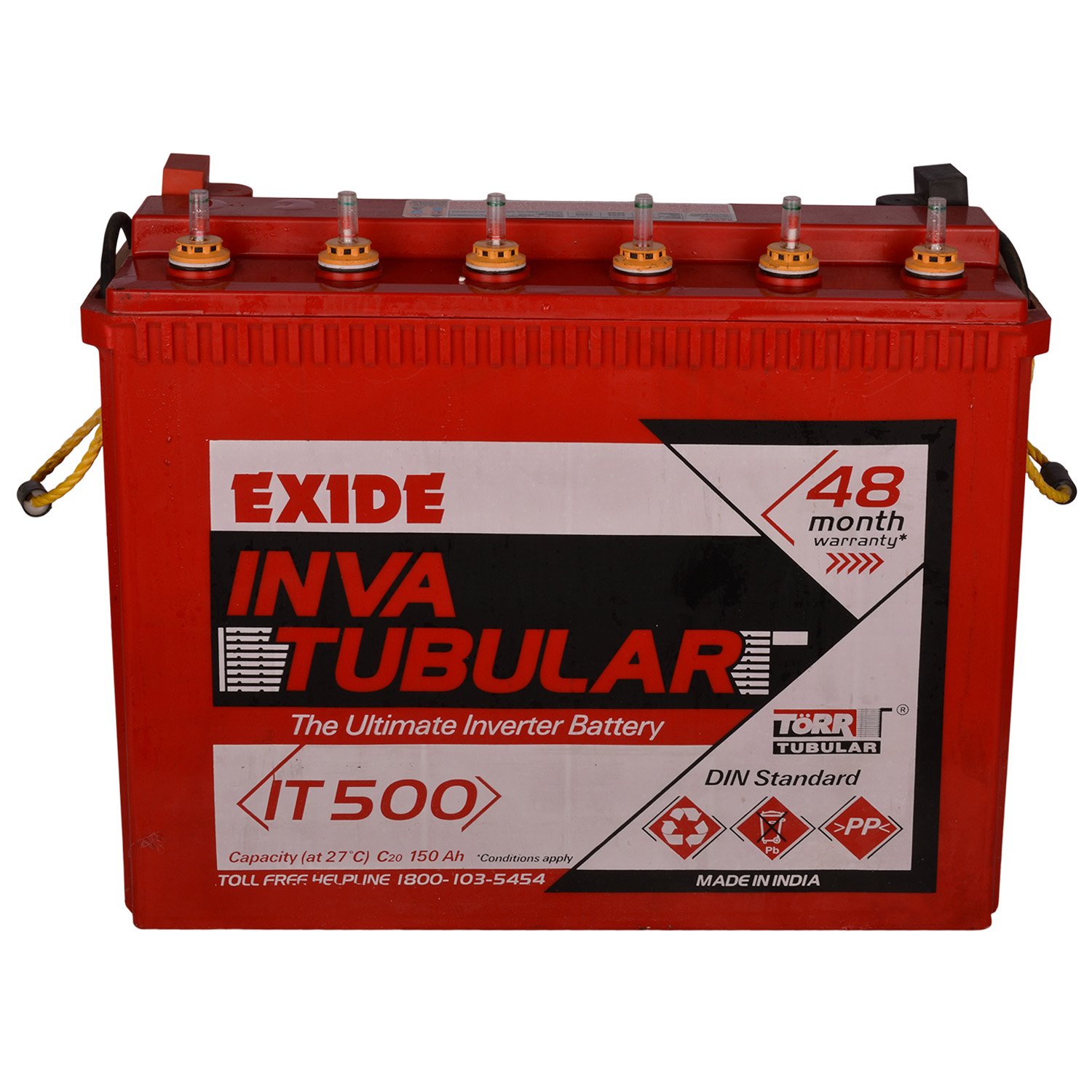
Tubular batteries have high efficiency and long life, due to their sophisticated design and structure. Though these batteries are expensive, they last for a long time, are maintenance-free, have high efficiency and are faster in charging.
Comparison between Automotive, maintenance-free and tubular batteries
| Tubular Batteries | Normal flat plate batteries/ automotive batteries | Maintenance-free batteries | |
| Life expectancy | 4 – 5 yrs | Maximum 3 yrs | More than 5 yrs |
| Water requirement | Low water loss | Frequent water topping | No water loss |
| Cyclic life | High | Low | High |
| Flexibility for temperature conditions | High | Low | High |
| Suitability for high-end applications | Yes | No | Yes |
| Design | Moderate | Simple | Complex |
| Battery charging | Charges fast | Charges slow | Charges fast |
| Need for high productive applications | Moderately recommended | Not recommended | Highly recommended |
| Efficiency | Moderate | Low | High |
| Scrap value | High | High | Low |
| Reliability | Reliable | Low reliability | Highly reliable |
| Cost | Moderate price | Low price | High price |
Warranty and guarantee of Inverter battery
All batteries come with warranties and guarantees. Warranty means repair and maintenance of the Inverter for a period undertaken by the brand whereas guarantee is the replacement of a defective inverter. Popular brands provide about 48 months of warranty time as the batteries are expensive and are vital for the Inverter. So, make sure you look for brands that offer the best deals of warranty and guarantee of the device when buying.
Efficiencies of the Inverters
Two things, including charging and conversion to AC to DC source, affect the efficiency of your Inverter. Both are important to consider before you think of buying an inverter. Also, the more efficient an inverter is, the more valuable it will be.
1. Charging
The efficiency of an inverter depends on the capability of the battery. If the battery gets fully charged, the efficiency can rise to 90%. If it is half charged or less, its efficiency can lower down to 60%. Local brand batteries generally deliver low efficiency, and it is useful if you go for well-known battery brands.
2. Conversion of DC to AC
The efficiency of the Inverter also depends on the power source. For example, a sine wave inverter shows 90% of efficiency when the power load is moderate and 80% - 70% of efficiency when the power load is low. The flow of direct current decides this efficiency. So you need to ensure that there is a good power supply while the battery is charging.
Look for inverters that have a high rate of conversion of direct current and alternating current or direct batteries which charge quickly from the power source available and last long.
What to consider before buying an Inverter?
Warranty: Higher warranty indicates longer life and superior quality. Warranty on the batteries can range from 12 to 48 months.
Float indicators and vent plugs: Batteries have conveniently placed visible float indicators so that you don't miss topping up the water when needed. Vent plugs should have a design to ensure that the gas pressure inside the battery is regulated.
Terminal Protectors: Batteries should come with terminal protectors to ensure the utmost safety to the consumers. These protectors prevent chances of accidental electrical shock.
Power consumption: An inverter cannot run all the electrical appliances of your home so make sure you calculate the total power consumption. Determine the combined load that would run using the inverter of adequate size. The watts of power drawn by every single appliance can help you decide the VA rating of your inverter.
Understand the VA rating of the inverter: Power generating equipment such as inverters, uninterrupted power supplies, generators are rated in VA. Also, appliances like such as lights, bulbs, refrigerators, air conditioners are rated in Watts.
Bypass Switch: With an inverter, there is always a possibility that the inverter may face issues like a blown fuse or power overload, etc.
These issues can affect the overall functioning of your inverter and this is where a bypass switch can turn out to be useful.
The Bypass switch allows you to by-pass the normal functioning of the inverter by using the power from the main electric grid. The power does not pass through the inverter and hence, this gives you some time to resolve the issue.
The bypass switch allows you to do so without causing any interruption in the power supply to your home.
Design and Technology: The inverter must have a user-friendly design that features proper display and indicators to understand its status. They should come with audio effects to show overload and current load.
The indicators help you to easily check out the display of the battery charge and water level. The inverter must consist of the latest technology and chips for remarkable output and optimal performance.
Optimization of the charging process of an inverter must be fixed automatically based on the charge levels. Hybrid inverters can be opted for charging the battery through solar power or energy.
Turning off an inverter can discharge its battery completely and it may not be able to provide you a backup when there is a power cut.
This is why you should not turn off the inverter. You should switch it off only while checking or while refilling the electrolyte or distilled water. Once you are complete with the refilling process, make sure to turn it on again.
Peak load and continuous load
While making a decision about the required size of the power inverter, it is very important to know the difference between continuous and peak power output.
The continuous load is the actual wattage at which the inverter runs. The peak load is the starting load which is necessary to get the inverter running. Almost all the inverters have a peak wattage twice to its continuous wattage.
If you have a fridge with a start up load of 15 ampere and a continuous load of 5 amperes, the peak surge rating can be calculated as follows:
5 amps X 120 volts = 600 watts continuous load
15 amps * 120 volts = 1800 watts starting load
In this case, you will have to look for an inverter with a peak surge rating that is greater than 1800 watts.
How does an Inverter Battery Get Energy or Power?
Battery is the power source of an inverter. But you may be confused about where the battery gets the energy from? Most of the inverters that we use for home come with rechargeable batteries.
So they take power from your house electric system, convert it to DC form and store it. When the power is down or gets cut off, the same energy gets converted back into AC form and supplied as backup. You can even charge some batteries using solar power, but they are not compatible with home inverters.
Inverter Vs UPS
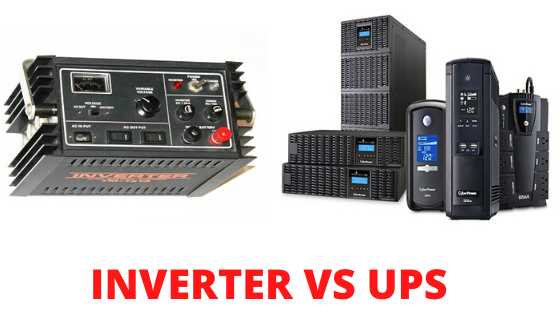
UPS is useful to backup your system. If you connect the desktop computer on the Inverter, any power loss, shutdowns of the machine takes a microsecond to fall over to the backup power solution. The Inverter is not suitable for computer backup due to its delay in switching on. The computer crash leads to the loss of data, unsaved programs and may damage hard disk and motherboard.
| Feature | UPS | Inverter |
| Use case | Provide backup to Desktop | Provide backup to Television, fans, lights, other appliances |
| Time delay to switch at the time of power cut | Negligible | For a Microsecond |
| Backup time | Around 10 to 20 minutes | Around 3 to 6 hours, depending on the inverter battery |
| Maintenance | No maintenance required | Need to fill water at regular intervals of time. |
| Price | 2,000 Rs - 6,000 Rs | 10,000 Rs - 40,000 Rs |
5 Best Inverter In India With Prices
1. Luminous Zelio 1100 Inverter with 150 Ah Tubular Battery
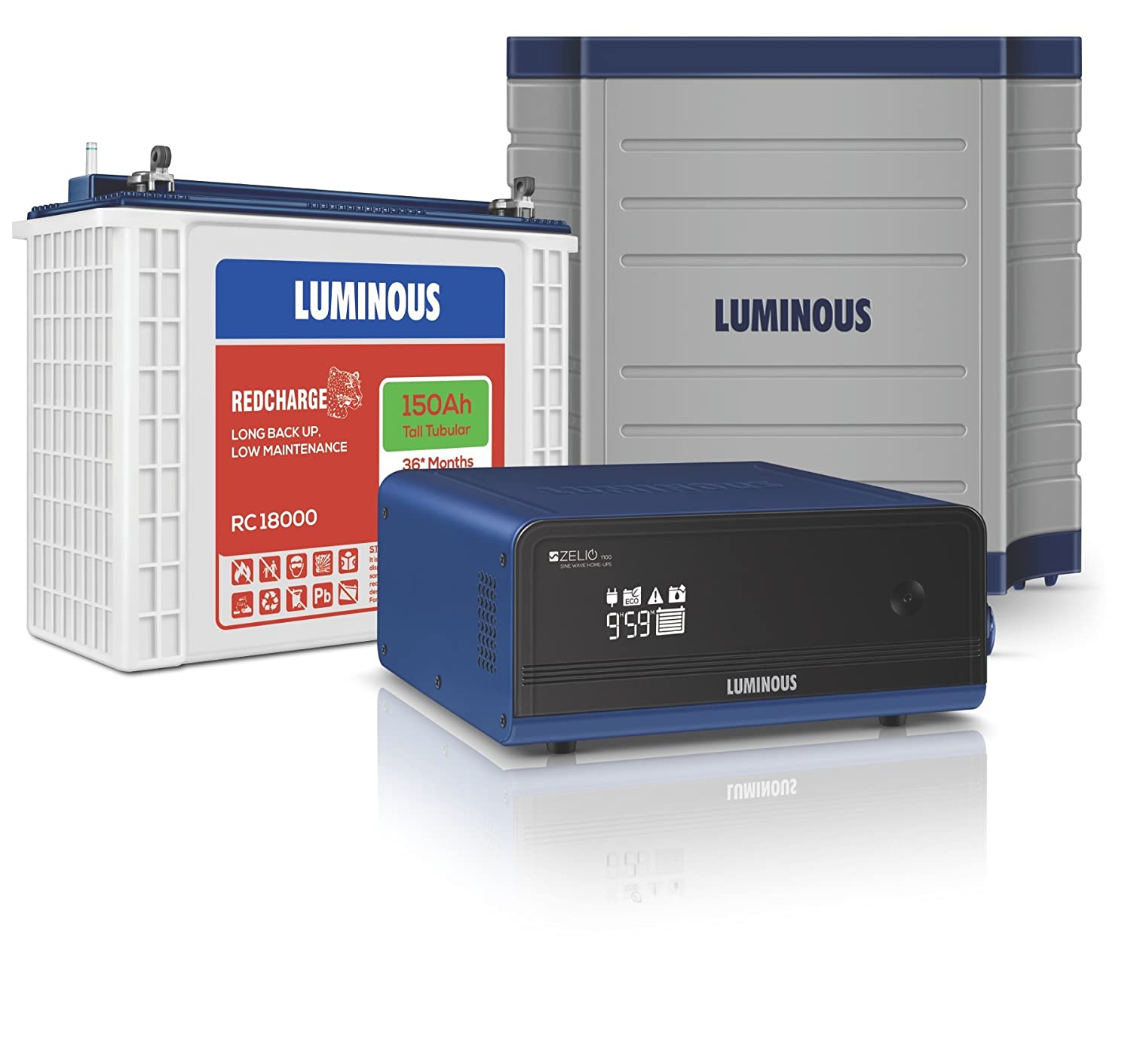
This inverter is a 900VA capacity appliance. This Luminous Zelio 1000 inverter is capable of handling even your refrigerator load and also delivers a warning when the battery reaches low limits.
Features of Luminous Zelio 1100 Inverter
| Sine wave technology | 900VA |
| Battery | 12V |
| Capacity | 150 Ah |
| Processor | 32-bit |
| Maximum bulb load | 685 Watts |
- Pure Sine Wave inverter UPS mode is available
- LCD monitor present to indicate charge levels
- The inverter can be insufficient if you need to use big appliances
- No automatic bypass switch
2. Exide 850 VA Home UPS and 150 Ah Battery
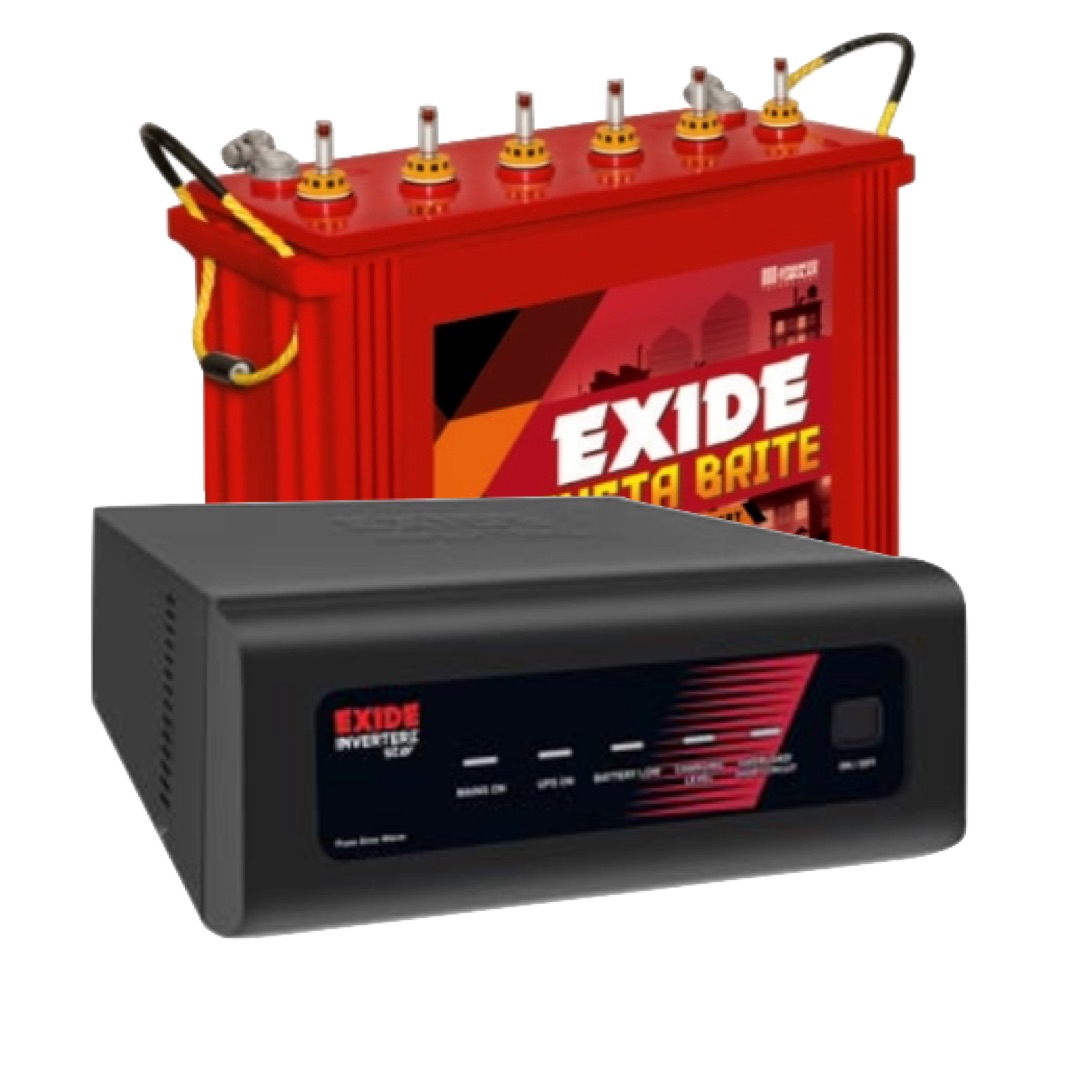
It is the perfect inverter for working couples and elderly persons. The LCD screen shows information such as the percentage of load, input and output voltage and battery power. The switchover time from the inverter to mains is ten milliseconds.
Features of Exide 850 VA Home UPS + 150 Ah Battery
| Battery capacity | 150 Ah |
| Warranty | 48-month |
| Switchover time | Ten milliseconds |
| Maximum load | 580 watts |
- Maintenance-free tubular battery
- Occupies less floor space
- No topping up of gel
- Excellent safety features
- Costs wise, it is an expensive appliance.
3. Microtek Sebz 1100 VA Pure Sine Wave Inverter

This inverter has a multi-stage battery charger to ensure that the battery remains in peak working condition. The inverter works in a voltage range of about 100 to 300V. The switchover time from the mains is around 15 milliseconds.
This inverter is a type of pure sine wave inverter having low harmonic distortion and works noiselessly. The Microtek inverter is also an energy-efficient one.
Features of Microtek Sebz 1100 VA Pure Sine Wave Inverter
| Capacity | 1100 VA |
| Voltage range | 100 to 300V |
| Switchover time | 15 milliseconds |
| Warranty | 24-month |
| Maximum output power | 880 Watts |
- Adequate protection
- Pure Sinewave inverter
- Excellent facilities like LCD indicators
- Switchover time could have been less Manual bypass switch
4. Su-Kam Falcon Eco 1000VA Sine Wave Inverter
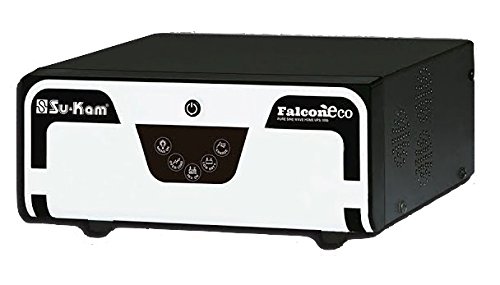
The Su-Kam Falcon Eco 1000 VA inverter protects your appliances 24X7. The Fuzzy Logic patented technology comes with automatic overload sensors that control the battery charging process efficiently.
The SMPS-based charger decreases both power requirement and consumption. This inverter gives you an option to choose between battery types and charging points.
Features of Su-Kam Falcon Eco 1000 VA Sine Wave Inverter
| Capacity | 1000 VA |
| Type | Eco-friendly inverter |
| Charger | SMPS based |
| Switchover | Effortless |
- Give power to various home appliances
- Capacity is of 1000 VA
- Patented technology that helps to control the battery charging process
- An automatic bypass is not possible.
5. Amaron Hi-Life Pro Pure Sine Wave Inverters
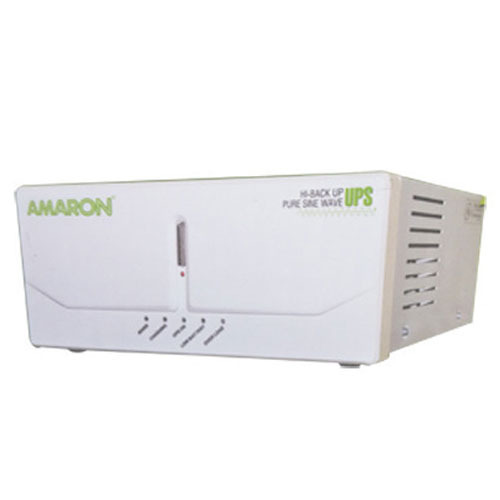
Amaron inverter covers all electrical appliances in your household. It is a noiseless inverter, and the switchover from the mains to the battery mode is instant and silent. The visual LCD indicators in this Inverter lets you know the power and backup position. The inverter also alerts you in case of overload. It comes under the Top 5 Best Inverters For Home in India 2020 that you can go for.
Features of Amaron Hi-Life Pro 900 VA Pure Sine Wave Home UPS Inverters
| Inverter type | Pure Sine Wave |
| Operation | Noiseless |
| Safety features | Blown fuse alarm protection, protection from short circuit, and low battery signal alert |
| Warranty | 10-year transformer |
- Excellent compatibility with Amaron batteries
- Transformer feature to reduce power consumption
- Brilliant load carrying capacity
- Inbuilt bypass switch not available.
Note: Also, nowadays, digital inverters are more commonly found. Earlier, there was the old technology of using transistor switching devices and transistorized devices for monitoring devices. But now they have come up with the technology of Digital Signal Processing (DSP) and microcontrollers for monitoring and controlling applications.
The switching transistors are replaced by MOSFETs (MOSFET- metal–oxide–semiconductor field-effect transistor is a type of transistor for amplifying electronic signal), in this type of an inverter.
Best inverter for Home in India 2020
Name | Price | Features | Ratings | Buy Now |
| V-Guard Prime 1150 Pure Sine Wave Inverter | Rs. 5,798 | Type: Pure Sine Wave Inverter Voltage: 90 V-295 V x User Selectable Output Frequency: 47-53 Hz in UPS mode and 40-55 Hz in Normal Mode Generator Compatible x 50 Hz +/- 0.5 Hz in Backup mode Visual and Audio Indicators | 4.4/5 |
|
| Luminous Zelio+ 1100/12V Pure Sine Wave Inverter | Rs. 5,299 | Type: Pure Sine Wave Inverter Voltage: 110V - 265V x 220V -230V Frequency: 50 x 50 Intuitive LED Display Eco/UPS Mode Compatible with All Battery Types | 4.3/5 |
|
| Luminous Eco Volt Neo 1050 Pure Sine Wave Inverter | Rs. 4,899 | Type: Pure Sine Wave Inverter Voltage: 90 - 290 V x 200 - 220V (+/- 10%) Frequency: 45 - 55 Hz x 50 Hz +/- 0.5 Hz | 4.3/5 |
|
| Microtek E²+925 VA E2+925 VA Square Wave Inverter | Rs. 3,899 | Type: Square Wave Inverter Voltage: 180 - 350 V x 230 Frequency: 50 Hz x 50 Hz Additional Energy Saving Features 2 Years on site warranty | 4.5/5 |
|
| Su-Kam falcon+1100 falcon+1100 Pure Sine Wave Inverter | Rs. 9,389 | Type: Pure Sine Wave Inverter Voltage: 90 to 240 x 220 Frequency: 45 to 60 x 50 Intelligent thermal management system Solar compatibility | 4.3/5 |
|
Best solar inverter in India 2020
Name | Price | Features | Ratings | Buy Now |
| Su-Kam falcon+1100 falcon+1100 Pure Sine Wave Inverter | Rs. 9,389 | Type: Pure Sine Wave Inverter Voltage: 90 to 240 x 220 Frequency: 45 to 60 x 50 Intelligent thermal management system Solar compatibility | 4.3/5 | |
| Microtek Solar UPS M-SUN-935 VA 12V Pure Sine Wave Inverter | Rs. 7,500 | Type: Pure Sine Wave Inverter Voltage: 230V x 230V Frequency: 50Hz x 50Hz 2 Year warranty | 3.4/5 |
|
| GENUS GGS025 1500 SW SOLAR PCU SURJA SURJA Pure Sine Wave Inverter | Rs. 8,000 | Type: Pure Sine Wave Inverter Voltage: 220 x 220 Frequency: 50 x 50 2 Year Warranty | 3.9/5 |
|
| Microtek Solar UPS M-SUN-1735 VA 24V Pure Sine Wave Inverter | Rs. 9,499 | Type: Pure Sine Wave Inverter Voltage: 230V x 230V Frequency: 50Hz x 50Hz 2 Year Warranty Weight:17.4Kg | 3.8/5 |
|
| Luminous ECO WATT+ 850 ECO WATT SOLAR 850 Square Wave Inverter | Rs. 7,699 | Type: Square Wave Inverter Voltage: 100V - 290V x 220 Volt Nominal Frequency: 50Hz+/-2Hz x 50Hz+/-2Hz Battery Deep Discharge Protection, Overload, Shortcircuit, Battery Reverse Polarity Protection Weight: 8 Kg 2 Year warranty | 4.0/5 |
|
Final checklist for before finalizing Inverter
If you are among the first time buyer, do purchase the Inverter battery combo.
It is good to buy Inverter trolley so that you can place the Inverter, the battery inside the trolley as it is easy to move. Before buying trolley make sure you have enough place at home to put the trolley
Finally, make sure your home has proper earthing, to avoid accidental electrocution. Look for a warranty; a more extended warranty means better products as we have mentioned the price of battery increases if the warranty increases.
Service and Maintenance of Inverter
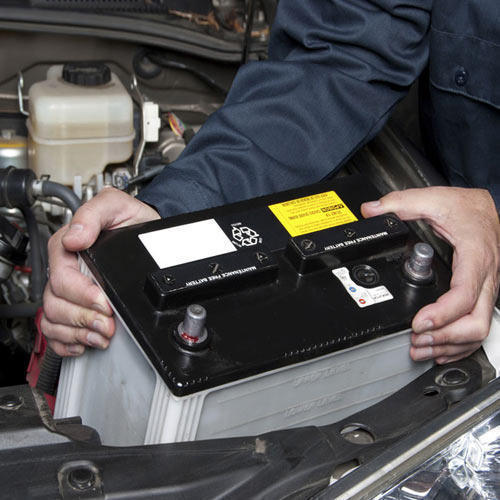
To optimize the performance of your Inverter, you should maintain and take care of it properly with regular servicing. It is good to go to an authorized service centre or dealer for proper servicing. A manufacturer offers a warranty period that will cover essential repair services. Once the time is over, you will have to go to a dealer for servicing. Or, you could also sign up an AMC (Annual Maintenance Contract) with the vendor for service.
What are the most common reasons for inverters not working?
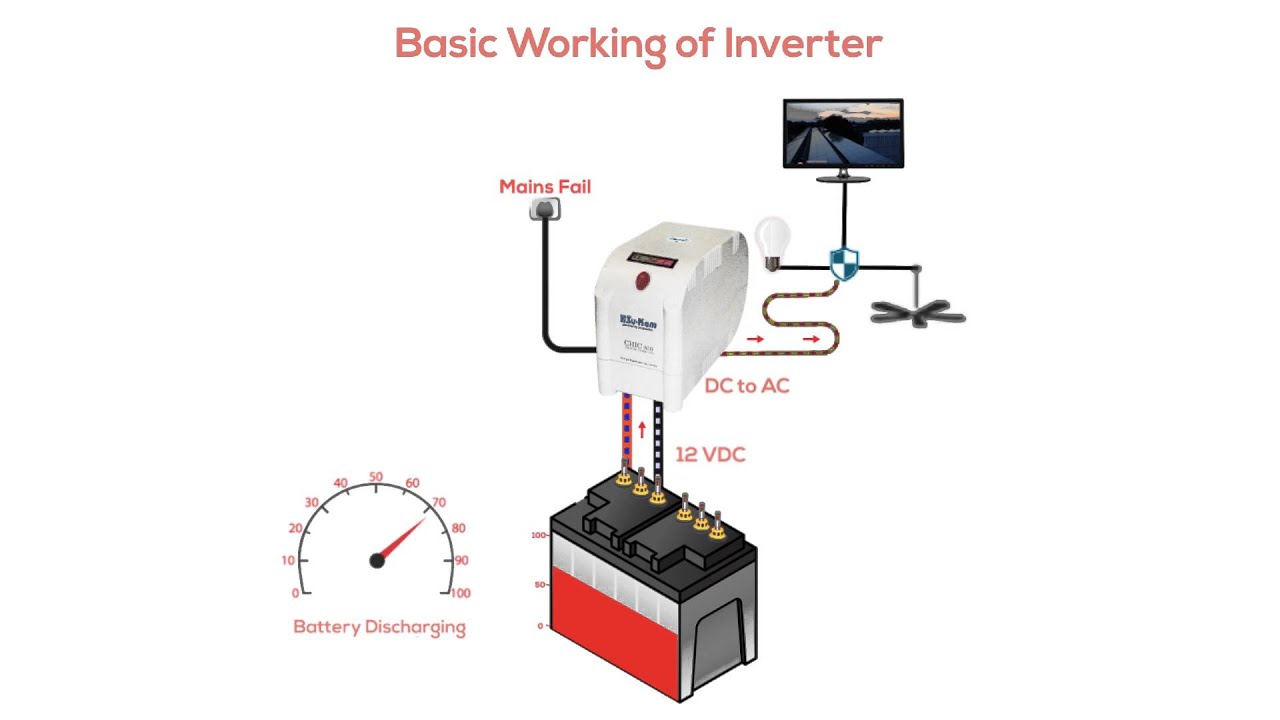
Inverters may stop working due to a variety of reasons. It contains sensitive electric parts and wiring, which may go wrong due to various reasons.
Here are few of them of the reasons why inverters do not work properly:
1. Faulty power switch – This is one of the most common reasons which leads to your inverter to stop working.
When you find that the inverter is not working, the first thing you should try is to unplug it from the main power source and plug it into another home appliance after turning on the switch to see if it works.
2. Defective- Another reason why inverters do not work, there is a high possibility that it may be defective. You can connect the inverter to another perfectly working switch and test if it runs smoothly after that.
You can even try disconnecting or discharging batteries. In many cases batteries are not connected to the inverter, and you often tend to forget checking on them before buying.
If the batteries are not connected, then connect them to the inverter. If you see they are discharged completely, then you need them to provide enough time for charging.
3. Inverters get trip off- In a few cases, the inverter often trips down, and you need to push the trip reset button to restart them.
4. Rusting- Sometimes, battery terminals become rusty or corrode over the time period and need proper cleanup to remove it. Rust accumulates on the battery terminals causes them to function poorly, which results in the low inverter performance.
To remove the rust, you have to clean them with the dry cloth and put them back in the battery and connect an inverter to see if it starts working.
Weak or flawed batteries stop the inverter from functioning. If the battery is new and the inverter is not functioning correctly, then you might need to replace it with another battery, which is strong enough to cater to the inverter requirement.
How Can We Increase The Life-Expectancy Of The Inverter Battery?
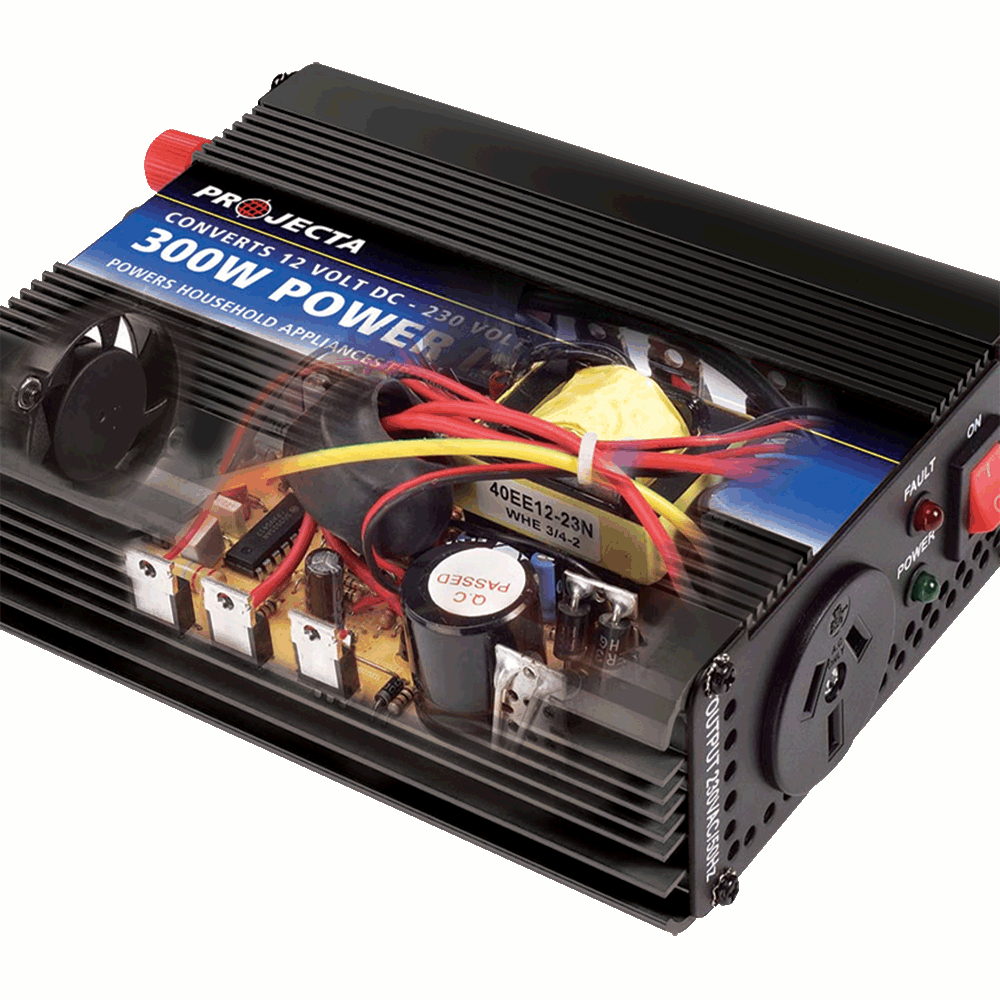
There are some things which you may follow to increase the durability or life-expectancy of your inverter battery:
-
Firstly, you need to top up the distilled water in regular intervals of time. Relying on the type of battery as well as the usage pattern, it needs to be replenished every 1-2 months.
-
It would be good if you set a reminder in the calendar of your smartphone or get a habit of checking the level of water after the first month.
-
You should constantly apply grease to the socket connections to guard the battery of the inverter from rust decays or corrosion. In case of corrosion, it would be better to do away with it using hot water, old brush, and baking soda.
-
You should always allow the inverter battery to completely discharge on a monthly basis and charge it freshly once again. It is going to entirely refresh the electrolyte present inside.
-
It would be better to avoid connecting the appliances with heavier loads to your inverter and overdo the gadgets when it isn’t required.
Utilizing the home appliances like inverters that are energy-efficient would also help in lowering down the overall load on the inverter battery considerably.
Where to buy an inverter- Online or in-store?
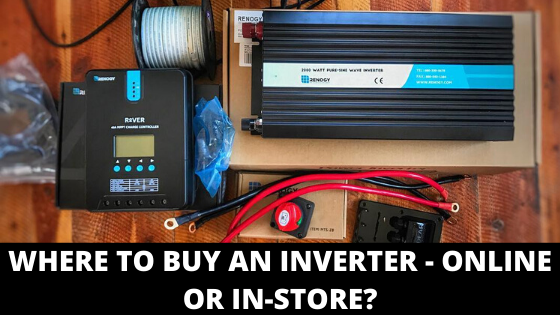
Power cuts are a common issue in our houses; it is essential to install an inverter combo for uninterrupted power at your home. Inverter batteries are unsafe products. Because of these reasons, there are very few batteries available online. You can check out the batteries on Amazon, Snapdeal and Flipkart. Below are some of the points that can be beneficial if you buy inverters online.
1. Trustworthy brand: Go for the brand that delivers 100% original products.
2. Safe and fast delivery: Online ordering makes sure that the Inverter you buy safely reaches your home.
3. Easy Installation: The Inverter and battery require installation with your mainline connection coming from the grid. Also, you get trained people that provide all the installation process.
4. Proper guidance depending on requirement: Buying an inverter and battery requires some understanding like knowing VA/Ah and what is appropriate according to your requirement.
5. Secure Payments: If you buy your Inverter online, you can follow secure payments methods through Debit or Credit card, Net Banking, Wallet, EMIs etc. In case none of the options is working for you, you can select Cash on delivery option.
6. Fast customer service: The service gets provided through the authorized service centre. If you face any problem with your Inverter in the warranty period, you can reach out to the service helpline number. The engineer will visit your home and fix everything from repairing the Inverter to replacing the batteries.
7. Buyback option for old batteries: You can even get your old battery exchanged for a new one and receive a Cashback amount at the time of delivering a new inverter.
8. Warranty on online purchases: Also, you can get a warranty on the inverter model you buy online and if you face any issues related to the model, you can contact the particular brand.
How to Take Care of Inverters and batteries?
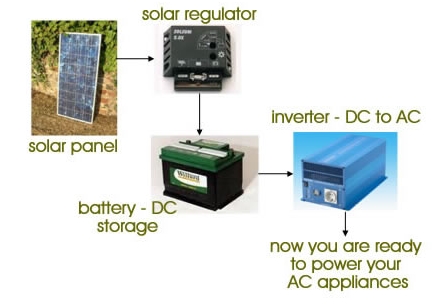
Purchasing a new inverter should now be easy for you. However, you should maintain the Inverter to be able to make it to work efficiently for a long time.
Taking care of the batteries is crucial to increase the lifespan of the Inverter. Here are some of the precautions you should take to improve the life of inverter batteries.
1. The batteries require regular replenishment of distilled water. The refilling period can vary between one and three months. To maintain a calendar on your smartphone or any diary that alerts you to replenish the water.
2. The socket connections can result in rusting as the water can spill out many times. The humidity can also cause rust. Applying grease on these can help prevent rusting. For corrosion problems, you can use baking soda in hot water.
3. Discharge the battery fully at least once a month and charge it all over again. It will help in rejuvenating the electrolyte solution.
4. Do not connect heavy loads devices to the Inverter, including refrigerators, air conditioners, washing machines, and water heaters.
5. If you are using the mixers and grinders, it is better if you switch off all the other appliances to prevent overloading on the Inverter.
6. Remember to place the Inverter on a flat surface, either in a horizontal or vertical position.
7. Never place the Inverter near the engine compartments like motor and keep it away from moisture and water. It is necessary to ensure that there is proper ventilation in your room where you decide to place your new Inverter.
8. Clean your Inverter regularly as dust can stick to the connections and affect the Inverter's performance.
9. Keep your Inverter away from flammable materials as you increase the risk of fire.
Precautions of Using an Inverter
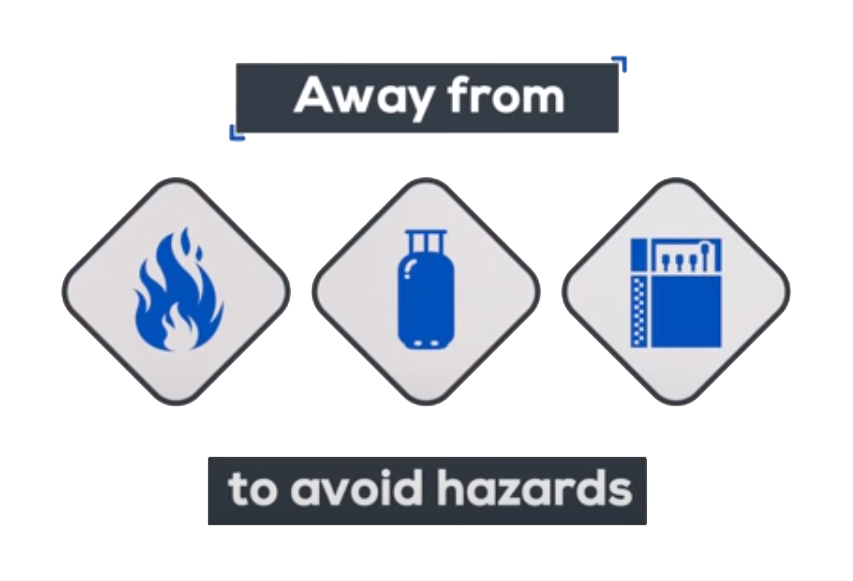
1. Check all the wiring of your house
Before buying a new inverter, you should consult an electrician to check whether your home wiring has a facility for backup. You should exclude the refrigerators and air conditioners from the inverters.
Your home should have a facility for backup. To provide backup to your home, you need a large size battery and inverter. If you want to provide backup to only a few selected fans, lights and appliances, the wiring should be in such a way to allow to run a few selected appliances on the inverter.
So consult your technician about the installation and get it done before you purchase inverter and battery. Bigger appliances require high power required to start the inverter, for example, AC and refrigerator. The battery requirement is also high.
2. Choose the right battery and Inverter
| Power requirement | Back-Up in hours | Suggested Inverter Capacity | Suggested battery size |
| 300 Watts | 2 hours | 750 VA | 50 Ah |
| 600 Watts | 2 hours | 1500 VA | 100 Ah |
| 900 Watts | 3 hours | 3500 VA | 300 Ah |
| 1000 Watts | 3 hours | 4000 VA | 300 Ah |
| 1200 Watts | 4 hours | 6000 VA | 400 Ah |
3. Inverter trolley
Placing the Inverter in the right direction and position is crucial as it should be on level ground. It is better to purchase a trolley which can accommodate both the Inverter and the battery.
Also, it is better to place the Inverter near to the main supply as it will avoid the unnecessary hanging of wires all around the house.
4. Earthing and other vital issues
You need to make sure that your house has proper earthing facilities to avoid significant accidents like short-circuits. You should avoid touching the Inverter or its battery terminals with wet hands.
Keep the Inverter away from the reach of the children. Clean the Inverter and battery to keep it away from dust that could accumulate on them. Remember to refill the distilled water supply at regular intervals. Make a calendar handy where you can note down all the details of refilling.
5. Warranty of Inverter
Keep in mind that you opt for inverters that provide a decent warranty. Longer the warranty, the more is the cost of the Inverter. It will be the right choice if you go for an inverter and battery combination as it is a long-term investment. Do go for the best combination that will ensure proper value for the money you spend.
Conclusion
So, we hope this information was helpful to you. Before buying an inverter for your home, you can consider all of the above-listed features. We hope you have got the answer of -How to choose the right inverter & battery for your home?
Make sure to look into the top brands as buying inverters is a one-time investment, and you should perform it by getting all information in hand.
Frequently Asked Questions
Q1. Which is the best inverter in India and where can I buy an inverter battery online?
A1. The best inverters for home use include Microtek, Luminous, VGuard, livfast, and many more other brands.
Q2. How do I choose an inverter?
A2. First of all, understand your power requirement. Find the rating of the Inverter you require. Also, be aware of the inverter battery size that you need and do not forget to consider the bigger appliances at your home.
Q3. How many watt inverters do I need?
A3. Volts x Amps = Watts. For example, if your DVD player draws 200 watts and your laptop another 100 watts, a minimum 400-watt inverter is recommended.
Q4. Which is a better generator or Inverter?
A4. Inverters are smaller, lighter, and quieter than standard generators. When it comes to Inverter vs standard generator operation, the difference comes in with overall efficiency. Conventional generators operate at a constant speed.
 Advertise with Us
Advertise with Us 100% Cashback
100% Cashback


0 Comments
Login to Post Comment